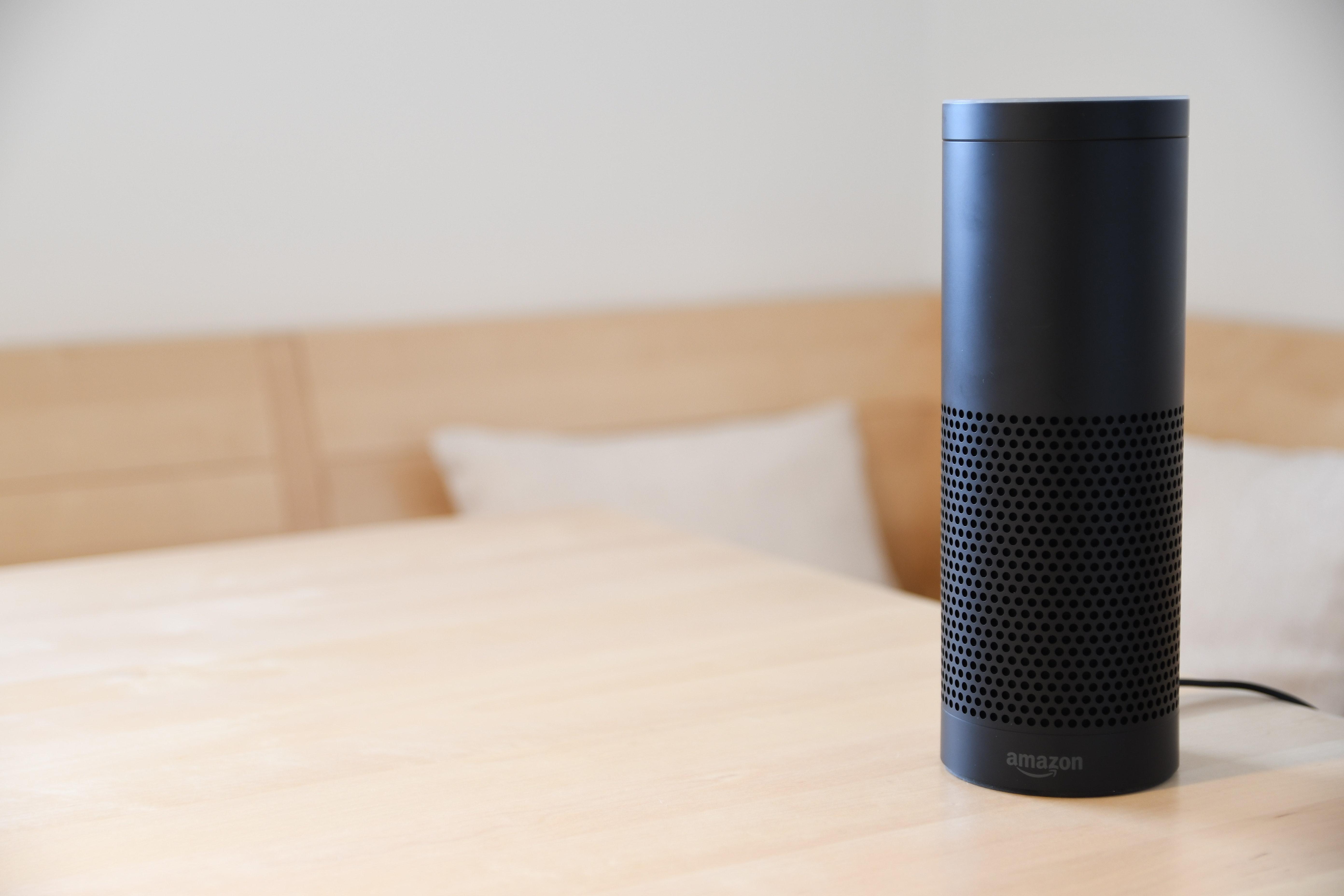Whether you call out to Alexa, Siri, Google, or Cortana whenever you need help with something or just want to listen to something, it’s true that smart speaker voice assistants are the new trend in tech. In fact, global sales of all smart speaker brands reached over 86 million units in 2018. That’s incredible! Not only are smart speakers and voice assistants fundamentally changing the way we search the internet for things, get information, and listen to music, they’re changing the way that media is consumed.
Full disclosure for this post: we’re an Amazon home. We have three Echo devices, three Fire TV’s, a number of Kindles and basically live our lives off of Dash buttons (which, coincidentally are being phased out by Amazon in favor of ordering through Alexa). We love Alexa. Plus, it’s extra cute when my four-and-a-half-year-old daughter yells at Alexa to play something for her. (Side note, one of my proudest parenting moments was when she asked Alexa to play the Beatles – unprompted by me or my wife.)
Whether we’re asking Alexa to put some music on for us, checking out the weather for the day, making a quick order of dishwasher detergent, or getting the news highlights for the day, the Echo makes life easier. And without even thinking about it, these smart speaker assistants are changing media and the advertising that goes along with it.
Change is in the Air
For one thing, smart speakers and smart displays are prompting more consumers to subscribe to premium music and video services in an attempt to subvert advertising. Spotify, Pandora, YouTube, Amazon – it doesn’t matter which service – for a monthly fee, your target consumers can avoid seeing or listening to your ad. Think of it as a paid pop-up blocker, except we the advertisers don’t get a cut of missing out on that marketing opportunity.
Smart speakers are also changing the way that people search the internet. When a person reaches into their pocket for their phone or sits down at the computer to fire up a search, we often take the shortest route of typing in keywords to get what we want. On the other hand, when we’re asking a virtual assistant for the same information, the phraseology and semantics are remarkably different. Often times, the search comes in the form of a question posed to the (sort of) life-like and likable assistant. After all, we don’t want to be rude! This means that in order to be found by our smart speakers, our SEO and SEM keywording needs to change, too.
Lastly, smart speakers are changing the way we think about and blur the lines between traditional and digital media advertising. This comes about in two different ways.
Further Blurring Traditional and Digital Media
The first way is by retreating to the idea that radio ads, especially on streaming platforms, are simply just radio ads. Beyond the enhanced targeting that streaming audio platforms allow, one of the big value-adds of these platforms (thinking of Pandora, Spotify, Amazon Music, etc.) was that they also gave the advertiser clickable banner ad space. With smart speaker devices, that value-add goes away. I think that in a not-so-distant future, all of these platforms will allow advertisers to target more specifically based on listening device, which means that the call to action of our ads will need to change. Something along the lines of “Ask your device to tell you more about XYZ Community Bank.”
The second way that smart speakers are changing the lines between digital and traditional media is how we are able to measure ads on traditional, terrestrial, media. Perhaps you enjoy listening to your favorite radio station and/or drive time show during your commute to and from work. Depending on the market and radio station, you’ve no doubt heard self-run ads by the station encouraging their listeners to enable that station’s “skill” on your device. Much like many banks and credit unions have skills for Amazon, Google, etc. for consumers to check their checking account balance.
The radio stations pitch the listeners on the benefit that if you have a smart speaker, you have a radio. Listen anywhere you are! No need for an old-fashioned tuner. To clarify this point: there are a number of third-party applications for smart speakers that will automatically tune to your radio station should you ask the smart speaker to do so.
The BIG benefit for radio stations in enabling these skills is one four-letter word. Data.
By having a skill for smart speakers, radio stations and even video providers are able to see incredible amounts of data! For instance, who’s listening when, what the demographic profile of the listeners are, and the engagement level of the listener. All of this is incredibly valuable in selling advertising space. What’s more, as an advertiser, we can be more succinct in our targeting in a medium that is typically not as targeted.
The opportunities and market for smart speaker listeners and smart display viewers will only continue to grow in the coming years. How it will continue to affect advertisers is yet to be seen. However, with the changes that these devices are already making, there is going to be a lot of focus placed on making sure advertisements and targeting are still relevant to the end consumer.


